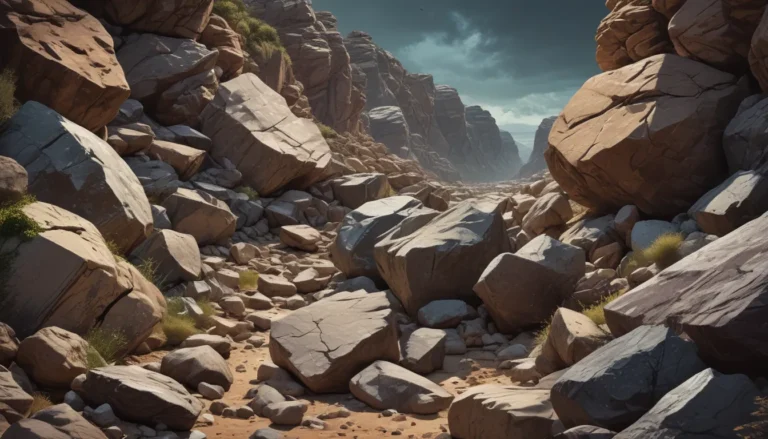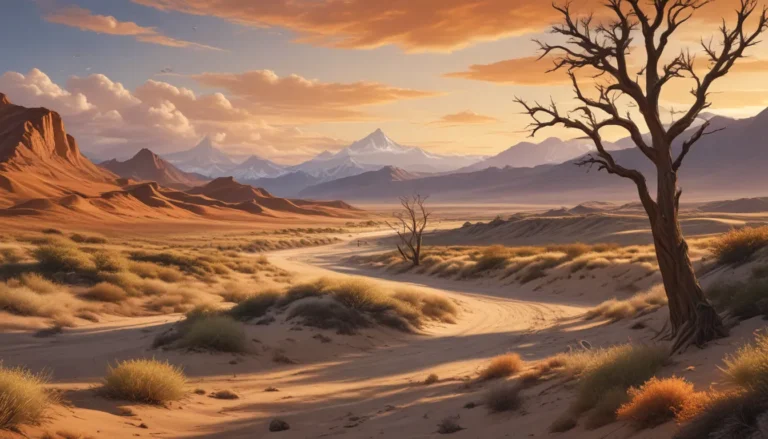A Note About Images: The images used in our articles are for illustration purposes only and may not exactly match the content. They are meant to engage readers, but the text should be relied upon for accurate information.
Have you ever wondered about the remarkable geological formations that have connected continents, shaped biodiversity, and influenced human history? Land bridges, the natural wonders that have played a significant role in the migration of species and the exploration of new territories, continue to captivate our imagination. In this article, we will delve into the intriguing world of land bridges, uncovering 15 astonishing facts that shed light on their formation, impact on ecosystems, and importance in scientific discovery.
The Marvelous World of Land Bridges
Land bridges are natural connections of land between two continents, often formed through tectonic movements or changes in sea levels. These geological marvels have provided pathways for the migration of species, allowing plants and animals to colonize new habitats and adapt to diverse environments. From above-water land bridges to lesser-known underwater connections, these structures have shaped Earth’s geography in unique and profound ways.
Unveiling the Bering Land Bridge
One of the most famous land bridges in history is the Bering Land Bridge, also known as Beringia. This land bridge connected Asia and North America during the last Ice Age, serving as a crucial pathway for the migration of humans and animals between the two continents. The presence of the Bering Land Bridge played a pivotal role in shaping the genetic diversity of populations in the Americas and has had lasting effects on North American biodiversity.
The Influence of Land Bridges on Climate and Ecosystems
When land bridges form, they not only provide a passage for species migration but also have a significant impact on climate patterns and ecosystems. These structures can alter ocean currents, create new habitats for diverse species, and influence the spread of diseases between continents. By studying the distribution of plants and animals across land bridges, scientists can gain valuable insights into evolutionary biology and the interconnectedness of Earth’s ecosystems.
Human History and Cultural Exchange
Land bridges have not only shaped the natural world but have also had a profound influence on human history. These structures have facilitated human migration, trade, and cultural exchange between continents, leading to the development of interconnected and diverse societies. The Isthmus of Panama, for example, connected North and South America, allowing for the exchange of flora and fauna and shaping the biodiversity of both continents.
Challenges and Conservation Efforts
Preserving the ecosystems and biodiversity of land bridges presents unique challenges, including human activities, climate change, and the need for international cooperation. Despite these challenges, the importance of conserving these structures for scientific research and ecological connectivity cannot be understated. Land bridges continue to play a vital role in shaping Earth’s geography and biodiversity, highlighting the need for ongoing conservation efforts.
The Ongoing Legacy of Land Bridges
From the migration of early humans to the spread of diseases and the facilitation of trade and cultural exchange, land bridges have left a lasting legacy on our planet. These natural wonders continue to captivate scientists and researchers, providing opportunities for exploration and scientific discovery. By studying and protecting land bridges, we can unravel new insights about Earth’s history, evolution, and the intricate connections that bind our planet together.
Conclusion: Embracing the Wonder of Land Bridges
As we reflect on the astonishing facts about land bridges and their impact on our world, we are reminded of the remarkable role these structures have played in shaping Earth’s history and biodiversity. From the ancient Bering Land Bridge to the modern Øresund Bridge, these geological formations continue to inspire awe and curiosity. As we look to the future, let us embrace the wonder of land bridges and strive to protect and preserve these vital corridors for ecological connectivity and scientific discovery.
Frequently Asked Questions
-
What is a land bridge?
A land bridge is a narrow strip of land that connects two larger land masses or continents, allowing for the migration of species and the movement of human populations. These structures can form through tectonic activity or changes in sea levels. -
How do land bridges influence climate and ecosystems?
Land bridges can alter ocean currents, influence climate patterns, and create new habitats for diverse species. These structures have a significant impact on biodiversity, ecosystem dynamics, and the spread of diseases between continents. -
Why are land bridges important for scientific research?
Land bridges provide valuable opportunities for studying evolutionary biology, species distribution, and the interconnectedness of Earth’s ecosystems. By exploring these structures, scientists can gain insights into the history of our planet and the processes that have shaped its biodiversity. -
What is the legacy of land bridges on human history?
Land bridges have played a crucial role in human migration, trade, and cultural exchange throughout history. These structures have enabled the movement of goods, ideas, and people between continents, shaping the development of societies and the exchange of knowledge and practices. -
How can we protect and conserve land bridges for future generations?
Preserving the ecosystems and biodiversity of land bridges requires international cooperation, sustainable conservation efforts, and a commitment to scientific research. By raising awareness about the importance of these structures, we can ensure their preservation for future generations to study and explore.
Unlock the mysteries of land bridges and embark on a journey through space and time to discover the awe-inspiring impact of these geological wonders on Earth. Explore the natural history of our planet at the Natural History Museum in London, where you can dive deeper into the wonders of biogeography, continental drift, and the interconnectedness of Earth’s diverse ecosystems. Join us in celebrating the marvels of land bridges and the incredible discoveries they continue to inspire.






